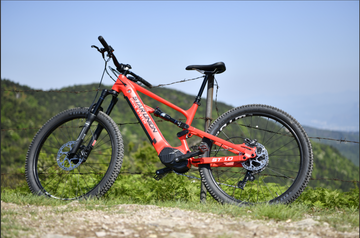Sealing and Leakage in Hydraulic Disc Brakes: How to Protect Your Brake System
by YunaLi on Apr 19, 2025

Hydraulic disc brakes have become the gold standard in modern bicycles and e-bikes due to their superior stopping power and responsive control. However, one critical issue often overlooked is the sealing and potential leakage within the hydraulic system. A minor leak can severely affect braking performance and rider safety.
In this blog, we’ll break down the causes of hydraulic brake leakage, how sealing components work, and what you can do to maintain a leak-free brake system.
Why Sealing Matters in Hydraulic Brake Systems
A hydraulic brake system relies on fluid pressure to transmit force from the brake lever to the caliper. This process is only effective if the system is completely sealed. Seals and gaskets prevent brake fluid from escaping and keep contaminants out.
Key sealing components include:
O-rings in master cylinders and calipers
Piston seals
Compression fittings and hose connectors
If any of these fail, you might experience:
Spongy brake feel
Decreased braking power
Fluid leaking around levers or calipers
Total brake failure in extreme cases

Common Causes of Hydraulic Brake Leakage
Understanding what causes leaks can help you prevent them:
1. Aged or Worn Seals
Rubber components can degrade over time due to heat, UV exposure, or chemical breakdown from the wrong type of brake fluid.
2. Incorrect Installation
Misaligned or dry-installed O-rings can get pinched or torn, leading to micro-leaks.
3. Loose Hose Connections
Vibrations, impacts, or improper tightening of compression fittings can lead to leaks at the hose junctions.
4. Using the Wrong Brake Fluid
Hydraulic brakes use specific fluid types (e.g., mineral oil or DOT fluid), and using the wrong one can damage seals and internal components.

How to Prevent Leaks in Your Brake System
Here are some simple but effective ways to protect your hydraulic brakes:
✅ Regularly Inspect Seals and Fittings
Check for any cracks, discoloration, or deformation in rubber components every 3–6 months. If they look worn, replace them before they fail.
✅ Install Seals with Lubrication
Always apply the correct brake grease when installing seals or O-rings to avoid damaging them during installation.
✅ Use the Right Brake Fluid
Stick to your brake system’s recommended fluid Mixing or using the wrong fluid can cause seal failure.
✅ Choose High-Quality Parts
Don't compromise on quality—reliable components from trusted brands will give you peace of mind and longer service life.
Recommended Products: Seal Kits and Brake Service Tools
Final Thoughts
A sealed hydraulic system is a safe system. Regular maintenance of seals and fluid can dramatically improve brake performance and reliability. Don’t wait until your brakes start leaking—preventive care is always better than emergency repairs.
Need help choosing the right service kit or replacement parts? Feel free to [contact us] or explore our product guides.



